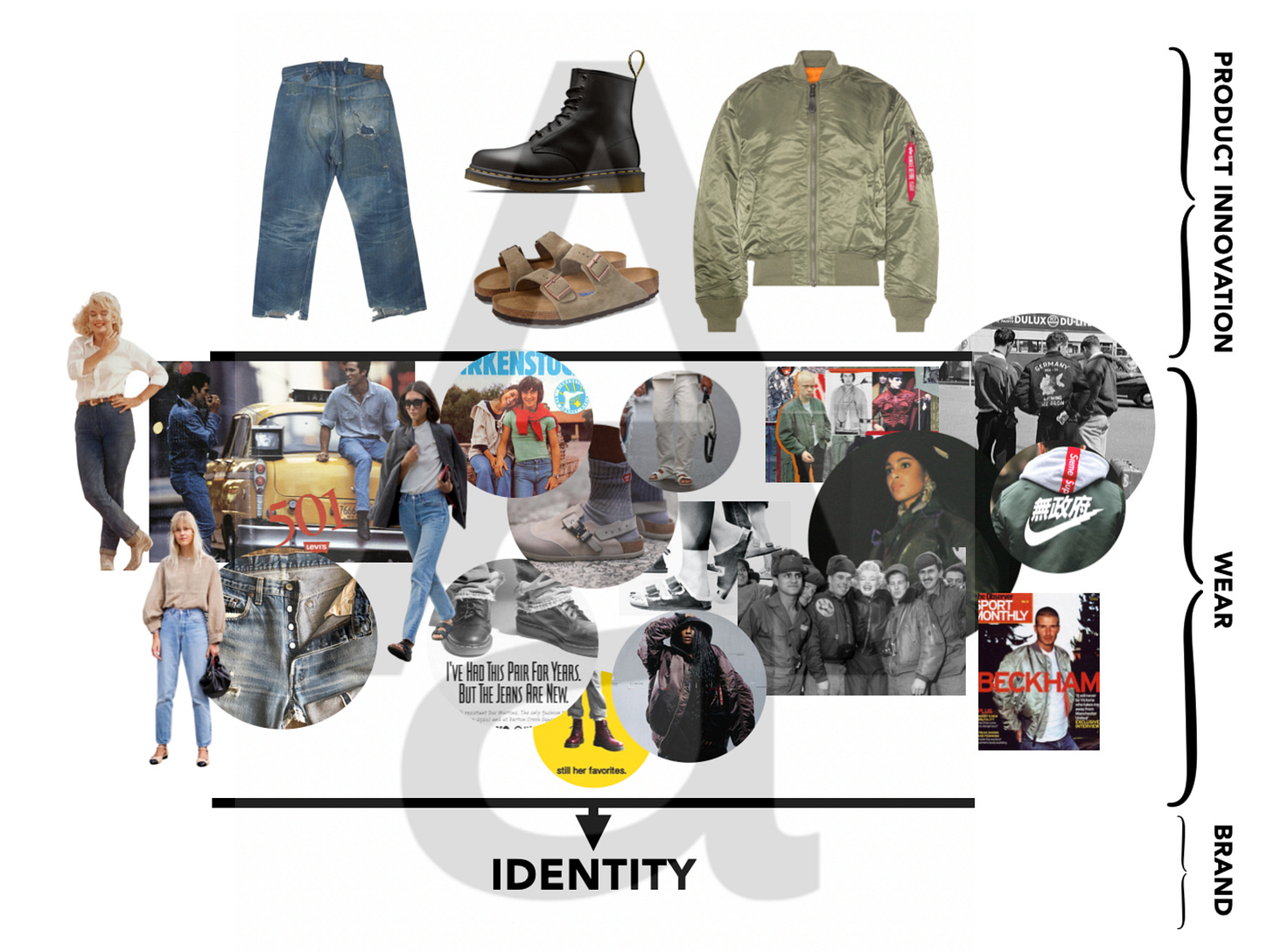PRODUCT WARS
How apparel's two opposing forces - identity and functionality - are shaping its strategy
Welcome to the Sociology of Business. In my last analysis, Customer-driven retail, I explored how to use customer personas in designing marketing, merchandising and assortment planning, communications, and retail experiences. Buy my book The Business of Aspiration and find me on Instagram, Twitter, and Threads. With one of the paid subscription options, join Paid Membership Chat, and with the free subscription, join The General Chat on The Sociology of Business WhatsApp group.
The full name of Muji, a Japanese retailer, is Mujirushi Ryohin, meaning “no brand quality goods.” This no-brand approach allowed Muji to expand globally and into categories like hotels and residences (the latest being MUJI BASE aimed to be “a place where visitors can experience a peaceful everyday life away from the city.”)
It is also uniquely positioned for the current retail moment. Muji’s philosophy is “simplicity and emptiness yield the ultimate universality, embracing the feelings and thoughts of all people.” It also seems to be Abercrombie’s, which has of late commanded business headlines for its impressive sales results.
The fact that one cannot tell anymore an Abercrombie item from those by other brands is fine. Like Muji, the retailer is winning on fit, sizing, quality, and variety of offerings. Muji describes its products as “succinct,” “empty vessels,” and “born from an extremely rational manufacturing process,” not meant to elicit strong affinity but rational satisfaction.
Functionality and identity have always been the two forces of apparel, their duality deeply interwoven in every product.
Items have a function - to clothe us, warm us, shield us from the elements. They also express our identity - our belonging, affinity, values. Where a product sits on the matrix above defines how it is going to be marketed and sold.
Some products, like Birkenstocks, Levi’s 501, Crocs, Dr Martens, IKEA blue shopping bags, Rimowa luggage, or Hermès Birkin are so identifiable that they easily carry both identity and functionality roles. Others, like Target jeans, a white Brunello t-shirt, Jacquemus leggings, even a Burberry trench, are functional but easily mistaken for one another. (On the chart above, examples are Jacquemus and Lorna Jane biker shorts, sleeveless trench from Burberry, Zara, and Eleventy, jeans from Target, a white t-shirt from Hanes, Brunello Cucinelli and Zara, and Muji and Away luggage).

It would be easy - and not wrong - to claim that the first group represents brands, the second commodities. But the difference between the two is less clear-cut than before.
Online marketplaces, which are the main purchasing destination for many consumers, flatten even the established brands, making them mutually interchangeable. Established brands also flatten themselves by making all the same styles. Identity does not equal popularity. It equals originality.
Lack of identity is behind Abercrombie’s recent surge in popularity (and a reason of Muji’s continued success; the company made $675M of its retail operations in 2023). These brands win through superior product functionality.
Items in the first quadrant started in the same way. They achieved their initial prominence due to their durability, comfort, fit, or quality (and, most likely, all of it). Levi’s 501s were invented by Levi Strauss and Jacob Davis in 1873, who patented a process for applying copper rivets onto men’s work pants to make them stronger. 501s are still considered Levi’s best-selling fit of all time, with FY2023 net revenue of $800M just for the 501 product family. Birkenstocks were founded in 1774 when Johann Adam Birkenstock created shoes that supported and contoured the foot. Dr Martens started in 1945 Munich when Dr. Klaus Maertens, a young soldier, created air-cushioned sole for his broken foot.
At the core of these iconic products is innovation in functionality.
Thanks to their innovativeness, these items, over time, assumed a distinct identity, lifestyle, subculture, affinity, or a set of values. To become iconic, they went through decades of being worn and used, advertised and retailed.
By being worn, products get identity.
Products’ multiple wears - in different contexts and for different purposes - create layers of personal, social, and cultural meaning woven into fabric. Iconic products - a pair of Levi’s or Dr Martens 1460 - connect different generations, places and cultural contexts. Their origins, wear stories, and product narratives give products history and symbolism, and turn them into social objects - those that convey a collective identity, create a community, and act as signifiers.
Some iconic products are associated with a subculture that adopted them and lent them its dominant codes of wear (Air Jordans and hypebeasts, Birkenstocks and first hippies and then fashion kids, MA-1 by punks in the 90’s).
The more wear stories, the richer the object.
Keep reading with a 7-day free trial
Subscribe to The Sociology of Business to keep reading this post and get 7 days of free access to the full post archives.




